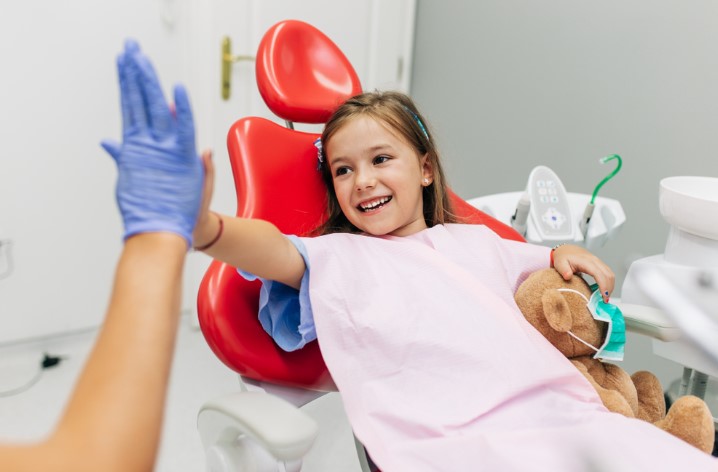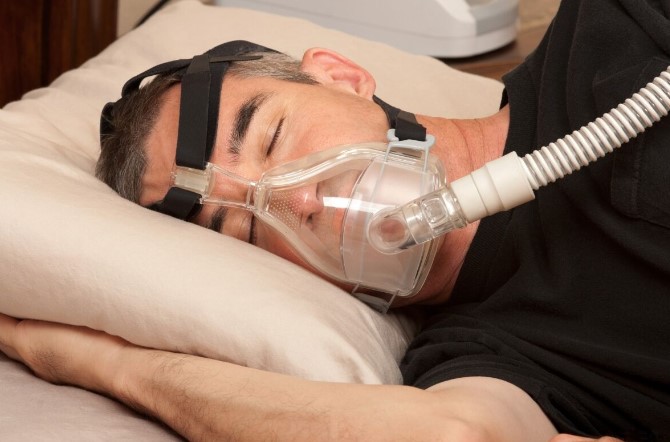What we learned from our family’s outbreak about preventing COVID’s spread : Shots


Blake Farmer plays with his kids, Louisa, 2, and Turner, 8, on the trampoline in their backyard in Nashville, Tennessee. After Thanksgiving, the family all had breakthrough COVID cases, resulting in a couple weeks spent at home. The trampoline served as a distraction for the kids, says Blake Farmer, their father.
Erica Calhoun for NPR
hide caption
toggle caption
Erica Calhoun for NPR

Blake Farmer plays with his kids, Louisa, 2, and Turner, 8, on the trampoline in their backyard in Nashville, Tennessee. After Thanksgiving, the family all had breakthrough COVID cases, resulting in a couple weeks spent at home. The trampoline served as a distraction for the kids, says Blake Farmer, their father.
Erica Calhoun for NPR
When our 2-year-old tested positive for COVID-19 after Thanksgiving, we knew it would put our mostly vaccinated household to the test – because the only place she seems to cough or sneeze is in her parents’ faces.
And if you’re thinking, “but couldn’t she just wear a mask?” then you haven’t been raising a toddler during the pandemic.
Breakthrough experiences are becoming more common as our vaccine protection wanes, our pandemic precautions fade and the variants become more prevalent and more evasive.
Our family’s saga began the Monday after Thanksgiving. And it left us with a handful of questions that I’ll try to answer in the hopes that our experience may help others navigate the December holidays.
As the boys in my 8-year-old’s Cub Scout den fumbled around with a compass in a dark church parking lot, I received a text from Moriah, my wife of 16 years.
“You probably need to come home … now,” she wrote. An 11-year-old, a cousin, who was at our house for Thanksgiving, had tested positive for COVID.
“[Expletive],” I thought.
Moriah’s first thought: “I’m a bad person. What was I thinking, inviting 20 people from Texas and Tennessee over to the house?”
As a health care journalist what went through my mind was: “This will be really interesting to see who gets sick.”
Falling like dominos
Ironically, this transmission event may have begun because our extended family members were trying to maximize the power of the vaccines. The presumed source of infection, the 11-year-old distant cousin, could theoretically have gotten a dose of the Pfizer vaccine for 5-11 year-olds before Thanksgiving.
But the cousin was on the cusp of turning 12, so her mother had decided to wait until her daughter’s birthday at the end of November. At that point, she would qualify for the bigger adult dose of the COVID vaccine.
That’s a reasonable thought, though it did remind me of some prescient words from Dr. James Hildreth, president and CEO of Meharry Medical College in Nashville. Whenever reporters asked him whether people should wait for the most effective vaccine, he responded with advice that became his mantra: The best COVID vaccine is the one you can get right away.
In our household, our immediate concern was our unvaccinated 2-year-old, Louisa. But the next morning we also tested Turner, the 8-year-old. He had just received his second dose of the pediatric Pfizer vaccine the day before and was actually feeling a tad puny.

Here in Nashville, it’s still remarkably easy to get a free PCR test with no appointment. And that night Turner’s results arrived by email — “virus detected.”
At that point we now had two little COVID patients. Louisa, whom we call “Lou,” was snotty and coughing. But neither kid had a fever.
We alerted their schools. Fortunately, Turner’s elementary in Metro Nashville Public Schools strictly enforces a mask requirement — despite the Tennessee legislature effectively outlawing mask mandates. So no one else had to quarantine. He was sent home to isolate for 10 days.
But Lou’s preschool class got the dreaded email: Sorry parents, class is out for at least a week.
Moriah felt guilt and shame. My take was more philosophical: Sorry, but this is just life in the age of COVID.
As for the two of us, we were putting our own vaccines to the test. I’ve been fully Pfizer’d since mid-April. Moriah had snagged Moderna shot a few weeks before me. Neither of us had made time yet to get the booster, though we were planning on it. But Moriah probably did have a little more protection than me, since she also had antibodies after falling ill with a pretty mean case of COVID back in 2020.
By the first weekend after Thanksgiving, everyone in our house was feeling rather sick of each other, but otherwise we were healthy. Still, I decided to get myself tested, since I was supposed to go to the radio station for an on-air fundraising drive.
And to my surprise I was positive.
I had no symptoms that I noticed, though I began thinking maybe my sniffer was a little off. Could have been my imagination. But at least I no longer had to pretend I was keeping my distance from my COVID-ridden kids.

Blake Farmer with his wife Moriah Farmer, and two kids, Turner, 8, and Louisa, 2, in the backyard of their home in Nashville, Tennessee. After a family gathering over Thanksgiving, Louisa contracted COVID-19 after showing symptoms of coughing and sneezing. This resulted in breakthrough cases for the whole family, who navigated working remotely and having kids home from school for nearly two weeks.
Erica Calhoun for NPR
hide caption
toggle caption
Erica Calhoun for NPR

Blake Farmer with his wife Moriah Farmer, and two kids, Turner, 8, and Louisa, 2, in the backyard of their home in Nashville, Tennessee. After a family gathering over Thanksgiving, Louisa contracted COVID-19 after showing symptoms of coughing and sneezing. This resulted in breakthrough cases for the whole family, who navigated working remotely and having kids home from school for nearly two weeks.
Erica Calhoun for NPR
In the end, we got through this unexpected holiday outbreak just fine, as a family. My wife and I are fortunate, in that we can work from home. We had to lean on screen-time more than we would have liked. The pandemic gift of a trampoline came in especially handy at this time, to keep the kids sane and somewhat exercised.
We served our isolation time, and resumed our normal routines on Dec. 13. We got ourselves PCR tests just to be sure, and they came back negative. We sent the kids back to school for a few more days before Christmas break. And that concluded our holiday-time brush with COVID.
But the experience left me with some questions, which I spent some time trying to answer.
How else could we have kept the family gathering safe?
Having nearly 20 people under one roof for a few days is a risk. We knew all the adults were vaccinated. And the grandparents, who had the highest risk of severe illness, were boosted. The kids who came to our house were a mixed bunch, as far as their vaccine status.
In hindsight, it would have been a good idea if everyone had taken rapid tests just before gathering. Epidemiologists say it doesn’t eliminate the risk of transmission, but it does give you a window of lower risk. At the same time, if I’m being honest, there was a part of me that just didn’t want to know. We had already called off Thanksgiving at the last minute in 2020, because of a local surge, and frankly, we missed gathering as a family.

The current official advice from the Biden administration, as Christmas approaches, doesn’t map easily onto the situation we faced.
President Biden said during a speech about omicron, on Dec. 21: “I know some Americans are wondering if you can safely celebrate the holidays with your family and friends. The answer is yes, you can, if you and those you celebrate with are vaccinated, particularly if you’ve gotten your booster shot.” And he added, if you “follow the precautions that we all know well.”
But how would that apply to our family, with its mix of vaccinated adults, and unvaccinated children?
CDC director Dr. Rochelle Walensky brought some clarity the following day, when she advised that Americans to “please get vaccinated, get boosted, wear a mask in public indoor settings, and take a COVID-19 test before gathering with others.”
Taking those rapid tests would indeed have been a good idea, in retrospect, but it’s unclear if everyone in our party would have been able to get their hands on those tests. Plus, they’re not free. Compared to Europe, availability of the tests has been erratic in the U.S., and recently many Americans have complained about being unable to find them.
Did our COVID vaccines work?
It sure seems like they did. The only person with symptoms in our house was the unvaccinated toddler. While my infection qualified as a “breakthrough” case, the vaccine did its job and kept me from becoming ill, or even feeling ill. It appears that even our 8-year-old, who at Thanksgiving time had only received one of his two pediatric shots, benefited from protection.

What if we hadn’t known that a guest tested positive?
This is the only part of the story that sort of scares me. If we hadn’t been alerted, we never would have thought about getting tested. Even little Lou just had what I would consider “the crud.” Her symptoms didn’t seem COVID-like. No one ever had a fever. Asymptomatic cases tend not to spread the virus as much as those that involve lots of coughing and sneezing everywhere. But if we hadn’t been alerted about the exposure, we certainly could have silently infected many more people, possibly someone vulnerable to severe infection.
My wife and I still need to get the booster, but since we had these breakthrough infections, should we wait a bit to get the booster?
The official recommendation of the CDC is to get a booster as soon as symptoms clear up. However, there’s some thought among infectious disease experts that it could be ideal to wait even longer, allowing the new antibodies created by a breakthrough infection to “mature.”
But as with many things in this pandemic, the science is still emerging. The official advice remains: Get a booster six months after the second vaccine dose. If you happen to be sick with a breakthrough infection at the time, then wait a little longer until symptoms disappear. There’s no way of being absolutely sure that an infection will be mild, like ours. Any COVID infection, even a breakthrough, can potentially become quite serious, or even fatal, and boosting is the best way to prevent infections.
We haven’t gotten the booster yet, but will.
Is this just how it’s going to be? A life of precautionary gatherings, frequent tests, and lots of disruptions and delays?
I pray not for much longer. Life during this pandemic asks a lot of us, even when we follow the science and get vaccinated. By contrast, we don’t go to get tested for the flu, after we learn we’ve been around someone who had the flu. For many families, there are real economic consequences to holing up for two weeks. And it’s psychologically burdensome. I can’t blame people for going on about their business if they’re vaccinated and feel fine, and deciding to see what happens after a possible exposure, rather than seek out a test.
But COVID is also quite different from the flu. COVID is still killing, on average, more than 1,200 Americans a day. So we have to treat it differently and do what we can to protect those around us.






